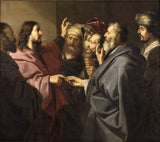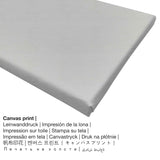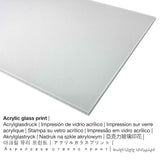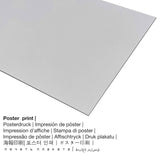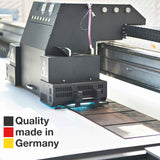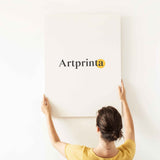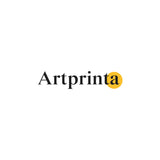Jacob Adriaensz Backer, 163 - The Tribute Money - ọmarịcha nka
Ụtụ gụnyere. Mbupu gbakọrọ na ndenye ọpụpụ.
Nkọwa ihe osise dịka ewepụtara site na weebụsaịtị Nationalmuseum Stockholm (© - nke Nationalmuseum Stockholm - www.nationalmuseum.se)
English: The Gospel of Matthew recounts how the Pharisees ask Jesus whether to pay taxes to the Roman Emperor. They try to trick Jesus into giving an answer that would lead to accusations by both the Roman authorities and the Jews, who resented the tax. Jesus points serenely to the emperor’s effigy on a coin and towards Heaven, saying that they must distinguish between material and spiritual matters: “Render therefore to Caesar the things that are Caesar’s, and to God the things that are God’s.” I Matteusevangeliet berättas hur fariséerna frågade Jesus om de borde betala den skatt som utkrävdes av den romerske kejsaren. De försökte lura Jesus att svara på ett sätt som skulle ge såväl kejsaren som judarna, som ogillade skatten, anledning att kritisera honom. Med stadig blick visar Jesus på myntet med kejsarens porträtt samtidigt som han pekar mot himlen. Han svarar att de bör skilja på materiella och andliga ting: ”Ge då kejsaren det som tillhör kejsaren, och Gud vad Gud tillhör
Bipụta nchịkọta ngwaahịa
The more than 1850 year-old masterpiece with the title "The Tribute Money" was created by the nwoke onye na-ese ihe Jacob Adriaensz Backer. The beyond 1850 years old original measures the size: Height: 139 cm (54,7 ″); Width: 159 cm (62,5 ″) Framed: Height: 177 cm (69,6 ″); Width: 197 cm (77,5 ″); Depth: 14 cm (5,5 ″) and was painted with the Usoro mmanụ na kwaaji. Nowadays, the artpiece belongs to the Nationalmuseum Stockholm's digital art collection, which is located in Stockholm, Obodo Stockholm, Sweden. With courtesy of Nationalmuseum Stockholm & Wikimedia Commons (license - public domain).: . Moreover, alignment of the digital reproduction is odida obodo ma nwee oke nke 1.2: 1, nke pụtara na ogologo bụ 20% ogologo karịa obosara.
Nhọrọ ihe ngwaahịa dị
Ndepụta ndetu ngwaahịa na-enye gị ohere ịhọrọ ngwa na nha nke gị. Anyị na-ahapụ gị ka ịhọrọ n'ime ụdị ndị a:
- Kwaaji: A canvas print is a printed cotton canvas stretched on a wooden frame. The canvas makes a soft and pleasant impression. Your canvas print of this artwork will give you the unique opportunity to transform your personal into a large size work of art like you would see in a gallery. The advantage of canvas prints is that they are relatively low in weight, which implies that it is quite simple to hang up the Canvas print without additional wall-mounts. Canvas prints are suited for all types of walls.
- Metal (aluminium debond mbipụta): An Aluminium Dibond print is a print with a true depth. The non-reflective surface structure make a contemporary look. The white and bright parts of the work of art shimmer with a silk gloss but without glare.
- Glass acrylic e biri ebi (nwere ezigbo mkpuchi iko): The print on acrylic glass, which is often labelled as a UV print on plexiglass, changes the original into wonderful décor. Additionally, it forms a distinct alternative option to canvas and dibond art prints. Your artwork is printed with the help of state-of-the-art UV print machines. Our real glass coating protects your chosen fine art print against light and heat for up to 60 years.
- Mpempe akwụkwọ (ihe kwaaji): The poster print is a UV printed cotton canvas paper with a slightly roughened surface texture. Please note, that depending on the size of the poster print we add a white margin 2 - 6cm round about the work of art to facilitate the framing.
metadata omenka ahaziri ahazi
| aha: | Jacob Adriaensz Backer |
| Gender: | nwoke |
| Obodo onye nka: | Dutch |
| Ọrụ: | onye na-ese ihe |
| Mba onye si: | mba netherland |
| Oge ndu: | 43 afọ |
| A mụrụ: | 1608 |
| Ebe omuma: | Harlingen |
| Nwụrụ n'afọ: | 1651 |
| Ebe ọnwụ: | Amsterdam |
Ozi ahaziri na mpempe nka
| Aha eserese: | "The Tribute Money" |
| Nhazi nka: | sere |
| Emepụtara na: | 163 |
| Ogologo afọ nka nka: | ihe dị ka afọ 1850 |
| Agba na: | mmanụ na kwaaji |
| Nha izizi (ọrụ nka): | Ogologo: 139 cm (54,7 ″); Obosara: 159 cm (62,5 ″) Ekebere: Elu: 177 cm (69,6 ″); Obosara: 197 cm (77,5 ″); Omimi: 14 cm (5,5 ″) |
| Egosiputara na: | National Museum nke Stockholm |
| Ebe ngosi nka: | Stockholm, Obodo Stockholm, Sweden |
| Ụlọ ihe ngosi nka webụsaịtị: | www.nationalmuseum.se |
| Ụdị ikike nka: | ngalaba ọha |
| Site n'aka: | Nationalmuseum Stockholm na Wikimedia Commons |
Banyere akụkọ
| Nkewa edemede: | mmepụta nka |
| Usoro mmeputakwa: | dijitalụ mmeputakwa |
| Usoro mmepụta: | Mbipụta UV ozugbo (mbipụta dijitalụ) |
| Mmalite ngwaahịa: | emepụtara na Germany |
| Ụdị ngwaahịa: | mmepụta ihe na-achọ |
| Ojiji ngwaahịa: | Ụlọ ihe ngosi nka, ụlọ mgbidi |
| Nhazi nka nka: | nhazi odida obodo |
| Njikwa oyiyi: | 1.2: 1 |
| Nsonaazụ nke oke onyonyo: | ogologo bụ 20% ogologo karịa obosara |
| Akụrụngwa ị nwere ike ịhọrọ site na: | Mbipụta kwaaji, mbipụta enyo acrylic (nwere ezigbo mkpuchi iko), mbipụta akwụkwọ mmado (akwụkwọ kwaaji), mbipụta ọla (aluminium dibbond) |
| Nhọrọ nha nke akwa akwa n'elu etiti ihe na-agbatị (mbipụta kwaaji): | 60x50cm - 24x20", 120x100cm - 47x39", 180x150cm - 71x59" |
| Mbipụta iko acrylic (nwere ezigbo mkpuchi iko) nhọrọ nha: | 60x50cm - 24x20", 120x100cm - 47x39", 180x150cm - 71x59" |
| Mpempe akwụkwọ mmado (akwụkwọ kwaaji) nha: | 60x50cm - 24x20", 120x100cm - 47x39" |
| Mbipụta aluminom (aluminium dibond ihe) nha dị iche iche: | 60x50cm - 24x20", 120x100cm - 47x39" |
| Nhazi nke nnomi nka: | biko mara na edeghị nka nka |
Ederede iwu: We try our utmost to describe our art products as clearly as possible and to display them visually on the respective product detail pages. Nonetheless, the colors of the printed materials, as well as the printing may diverge somehwat from the presentation on your screen. Depending on your settings of your screen and the quality of the surface, not all colors are printed as realistically as the digital version shown here. Since the are printed and processed manually, there might also be minor differences in the size and exact position of the motif.
Enwere ikike nwebiisinka © | Artprinta.com (Artprinta)

